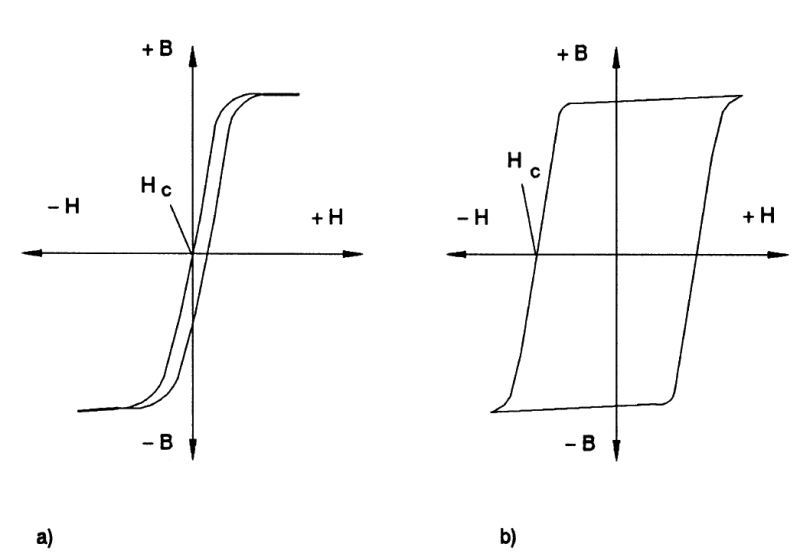Permanent magnet
Magnet made of one piece of a magnetizable material, iron, cobalt, or nickel for example, which maintains its static magnetic field without the requirement of electric current (as is the case with electric magnets).
On their surface, permanent magnets have one of each or an equal number of the same pole types (north pole and south pole). The earliest practical application of magnets were compasses. A permanent magnet can be obtained by the effect of a magnetic field on a ferro-magnetic material with a large-area hysteresis curve (hard-magnetic material). The material can be de-magnetized through a decaying alternating magnetic field, through heat-up above Curie temperature, or through impacts.
In contrast to the induction curve for magnetically soft materials illustrated in Fig. 1, permanent magnets (hard-magnetic materials) have a broader hysteresis loop (s. Hysteresis) . Inhomogeneities in the structures, such as inclusions of foreign bodies, diffusions, and lattice imperfections, promote hard-magnetic behavior.


